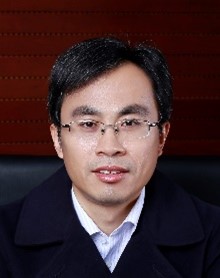Quantum Design of
Marine Engineering Materials
Research Interests
※Hydrogen embrittlement of metal materials
※Grain boundary brittleness of materials
※Corrosion and protection of materials, quantum design of high-strength steels
※Two-dimensional van der Waals materials
※Development of high-throughput first-principles material calculation interface package VASPKIT
※Precipitated phases of superalloys
※Radiation damage of structural materials for fusion reactors
※Phase transition of shape memory alloys
※Magnetic semiconductor materials
Selected Publications
[1] Wang V, Xu N, Liu JC, Tang G,Geng WT. VASPKIT: a user-friendly interface facilitating high-throughput computing and analysis using VASP code. Computer Physics Communications, 108033 (2021)
[2] Geng WT, et al. Displacement vorticity as the origin of moiré potentials in twisted WSe2/MoSe2 bilayer. Matter, 6(2), 493 – 505 (2022).
[3] Geng WT, Wang V, Liu YC, Ohno T, Nara J. Moiré Potential, Lattice Corrugation, and Band Gap Spatial Variation in a Twist-Free MoTe2/MoS2Heterobilayer. Journal of Physical Chemistry Letters11, 2637-2646 (2020).
[4] Geng WT, Zhan Q. One-for-multiple substitution of large atoms in beryllium. Scripta Materialia162, 172-175 (2019).
[5] Geng WT, Wang V, Li JX, Ishikawa N, Kimizuka H, Tsuzaki K, Ogata S. Hydrogen trapping in carbon supersaturated alpha iron and its decohesion effect in martensitic steel. Scripta Materialia149, 79-83 (2018).
[6] Geng WT, Wan L, Du JP, Ishii A, Ishikawa N, Kimizuka H, Ogata S. Hydrogen bubble nucleation in alpha-iron. Scripta Materialia134, 105-109 (2017).
[7] Wang V,Geng WT. Lattice Defects and the Mechanical Anisotropy of Borophene. Journal of Physical Chemistry C121, 10224-10232 (2017).
[8] Niu JG,Geng WT. Anti-precursor effect of Fe on martensitic transformation in TiNi alloys. Acta Materialia104, 18-24 (2016).
[9]Wang V, Liu YC, Kawazoe Y,Geng WT. Role of Interlayer Coupling on the Evolution of Band Edges in Few-Layer Phosphorene. Journal of Physical Chemistry Letters6, 4876-4883 (2015).
[10] Wang V, Kawazoe Y,Geng WT. Native point defects in few-layer phosphorene. Physical Review B91, 045433-1-045433-9 (2015).
[11] Niu JG, Geng WT. Oxygen-induced lattice distortion in beta-Ti3Nb and its suppression effect on beta to alpha ''transformation. Acta Materialia81, 194-203 (2014).
[12] Jiang B, Wan FR,Geng WT. Strong hydrogen trapping at helium in tungsten: Density functional theory calculations. Physical Review B81, 134112-1-134112-8 (2010).
[13] Tian ZX, Yan JX, Xiao W,Geng WT. Effect of lateral contraction and magnetism on the energy release upon fracture in metals: First principles computational tensile tests. Physical Review B79, 144114-1-144114-10 (2009).
[14] Geng WT, Ping DH, Gu YF, Cui CY, Harada H. Stability of nanoscale co-precipitates in a superalloy: A combined first-principles and atom probe tomography study. Physical Review B76, 224102-1-224102-10 (2007).
[15] Geng WT, Wang JS, Olson GB. Comment on Grain boundary decohesion by impurity segregation in a nickel-sulfur system. Science309, 1677c (2005).
[16] Geng WT. Cr segregation at the Fe-Cr surface: A first-principles GGA investigation. Physical Review B68, 233402-1-233402-4 (2003).
[17] Geng WT, Kim KS. Structural, electronic, and magnetic properties of a ferromagnetic semiconductor: Co-doped TiO2 rutile. Physical Review B68, 125203-1-125203-4 (2003).
[18] Geng WT, Freeman AJ, Olson GB. Influence of alloying additions on grain boundary cohesion of transition metals: First-principlesdetermination and its phenomenological extension. Physical Review B63, 165415-1-165415-9 (2001).
[19] Geng WT, Freeman AJ, Wu R, Geller CB, Raynolds JE. Embrittling and strengthening effects of hydrogen, boron, and phosphorus on a Sigma 5 nickel grain boundary. Physical Review B60, 7149-7155 (1999).
Employment Experience
Postdoctoral, Department of Physics and Astronomy, Northwestern University, U.S.A. (1998-2001)
Postdoctoral, the Fritz-Haber Institute of the Max Planck Society, Germany (2001-2002)
2002.04-2003.03 Research Assistant Professor, Department of Chemistry, Pohang University of Science and Technology, Korea (2002-2003)
Special Researcher, National Institute of Materials Science, Japan (2003-2005)
Professor, Department of Physics, Qingdao University, (2005-2005)
Professor, School of Materials Science and Engineering, University of Science and Technology Beijing (2005-2021)
Professor, School of Materials Science and Engineering, Hainan University (2021 - now)
Education
B.S. Theoretical Physics, Lanzhou University, 1992.06
M.S. Theoretical Physics, Lanzhou University, 1995.06
Ph. D. Theoretical Physics, Institute of Physics, Chinese Academy of Sciences, 1998.08
Wen-Tong Geng
Hainan University Professor of School of Materials Science and Engineering,
Haikou 570228, China
E-mail: geng@hainanu.edu.cn
Quick Links
Accessibility
